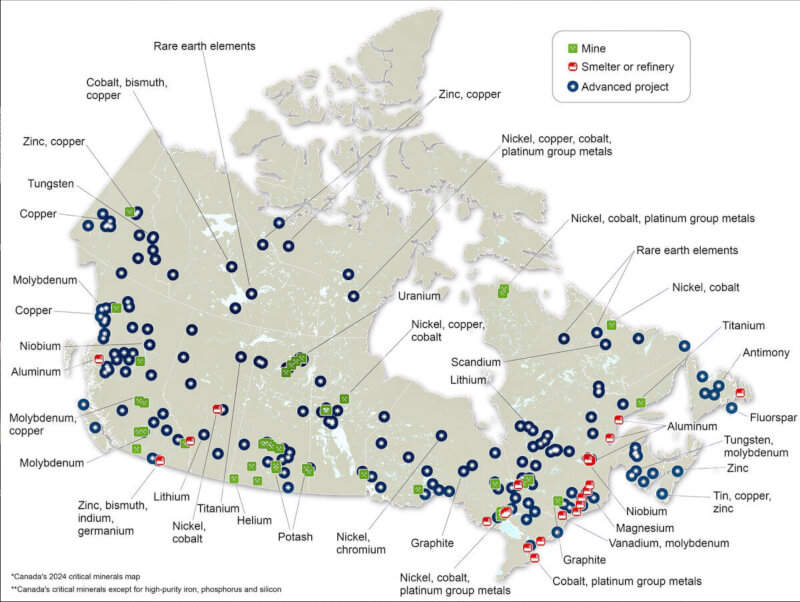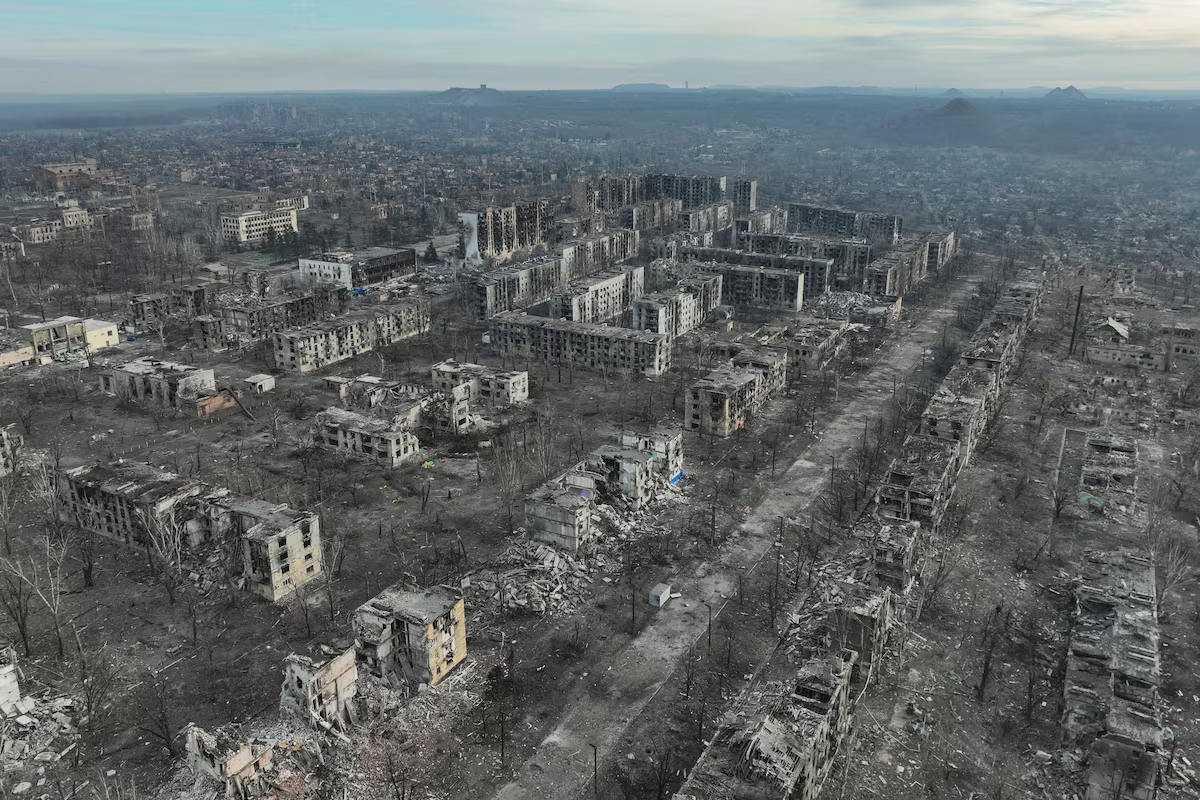
A small boat rescues a seaman from the 31,800-ton USS West Virginia. Smoke rolling out amidships shows where the most extensive damage occurred.
[U.S. Library of Congress/fsa.8e00810]
Europe was already under Hitler’s thumb. In June, the Nazi dictator sent his forces east into Soviet Russia. The Allies’ supply lines were suffering unsettling losses to German U-boats in the North Atlantic, while Erwin Rommel was notching up victories and laying siege to the key port of Tobruk in oil-rich North Africa.
An isolationist America wasn’t yet fighting, but it was supporting the Allied efforts with critical ships, planes, vehicles, tanks, weapons, ammunition, food and other necessities. It was also sending the equivalent of billions of dollars today in aid to China.
Japan, an island nation with limited resources, wasn’t looking to trade for what it needed, but to take it by force.
The Americans advocated an “open door” policy that blocked Japanese designs on China by insisting that all nations should have equal access to its market, wrote Max Boot recently for the Washington Post.
When Japan began its invasion of China in 1931, he explained, Washington responded with economic sanctions, first targeting exports of scrap metal and aviation fuel to Japan, followed by raw materials such as iron, brass, copper and, finally, oil.
With negotiations in the Pacific making little to no headway and Tokyo’s forces advancing into southern Indochina, the Americans froze Japanese assets on July 25. A week later, the U.S. banned oil exports to “aggressor countries,” including Japan.
The embargo was joined by two other major oil producers, Britain and the Netherlands. For Japan’s hawkish prime minister, army General Hideki Tojo, it was the last straw. On Nov. 20, 1941, he presented a final offer.
The Japanese were feeling the pinch.
They demanded the U.S. end aid to China and lift the embargo on oil and other resources to Japan. In exchange, Japan promised not to launch any attacks in southeast Asia and to withdraw its forces from southern Indochina.
The American counter-proposal of Nov. 26 required Japan to unconditionally evacuate all of China and conclude non-aggression pacts with all Pacific powers.
It refused.

Oil reserves in Saudi Arabia and the other Persian Gulf countries are mostly conventional high-grade. Venezuela’s huge reserve numbers come from the massive heavy oil deposits in the Orinoco Basin, while Canada’s come from the oilsands. Extracting these heavier oil sources is more energy- and carbon-intensive than the high-quality Persian Gulf oil.
[Energy BC]
“We can run wild for six months or maybe a year, but after that, I have utterly no confidence.”
—Japanese Admiral Isoroku Yamamoto
In the early hours of Dec. 7, 1941, Japanese forces launched attacks on the Philippines, Guam, Wake Island, British Malaya, Thailand and Hong Kong. To keep the Americans at bay, they also sought to wipe out the U.S. Pacific fleet based at Pearl Harbor, Hawaii.
Fortunately for the United States, and perhaps the world, the American aircraft carriers weren’t in port at the time. Of 102 ships stationed at Pearl Harbor, only 26 were damaged and seven sunk. Just two, the battleships Arizona and Utah, a training vessel, were deemed total losses and written off.
Most critically, the attackers overlooked the 20 petroleum storage tanks containing the U.S. fleet’s supply of 250 million gallons (9.5 billion litres) of fuel. They passed over the power station, drydock, shipyard, and maintenance and torpedo storage facilities. The submarine piers and headquarters—with its decoding room that all but won the U.S. the pivotal Battle of Midway six months later—were also spared.
In the 1970 American film Tora! Tora! Tora!, Japanese Admiral Isoroku Yamamoto is quoted as saying after the attack: “I fear all we have done is to awaken a sleeping giant and fill him with a terrible resolve.”
Whether he actually spoke these words is unclear. He had studied at Harvard University in Massachusetts and served as naval attaché to the Japanese embassy in Washington. Yamamoto knew the Americans well and is known to have had misgivings about engaging the U.S. in an all-out war, cautioning that Japan’s hope for victory would be limited by time and oil and, win or lose, it would come a great cost.
“We can run wild for six months or maybe a year, but after that, I have utterly no confidence,” he warned.
Indeed, the Americans sunk four Japanese fleet carriers at Midway in June and sailed away with a decisive victory that changed the course of the Pacific War in the virtual blink of an eye. Further Allied victories at Guadalcanal in September 1942 and New Guinea in 1943 relegated the resource-starved Japanese to a defensive posture for the rest of the war. Aided by Canadian uranium, a U.S.-led project developed the atomic bomb and used it at Hiroshima and Nagasaki in August 1945.

Canada’s critical minerals list was described by Newsweek as “a treasure trove.”
[Natural Resources Canada]
Coveted rare earth elements are hidden beneath Canadian hinterlands. And bountiful freshwater fills Canada’s two million lakes and 8,500 rivers.
As new and developing technologies demand more of the environment’s resources and carve new divisions between those who have them and those who don’t, Canada has been hailed as the next superpower—a resource superpower.
The role may elevate Canada on the world stage, but the country’s emerging resource riches have also made it an object of disquieting attention.
Russia and China have their eyes on the vast and progressively more accessible North. U.S. President Donald Trump has repeatedly said his tariffs on Canadian oil, steel, aluminum and automobile imports are designed to crush Canada’s economy and force it to become America’s “51st state.”
The reason? Fossil fuel reserves and rare earth elements.
Natural Resources Canada reports that the country has some of the largest known reserves of rare earth elements in the world, estimated at more than 15.2 million tonnes in 2023.
Rare earth elements (cerium, yttrium, lanthanum and neodymium) and alloys are used in everyday devices such as computers, electronics and cars, as well as in clean energy, aerospace and defence technologies. Known as REEs, their unique physical, chemical, magnetic and luminescent properties help improve efficiency and durability while decreasing the size and weight of certain electronic components and alloys.
Permanent magnets are the largest and most important end use of REEs, accounting for 44 per cent of demand in 2022. Permanent magnets are used in cell phones, televisions, computers, automobiles, wind turbines, MRI machines, jet aircraft and many other products.
Because of their luminescent properties, REEs are also used in a variety of other applications, such as LCD screens, LEDs, lasers and fluorescent lighting. They can be found in catalytic converters, optical glass used in camera lenses, and the polishing powders used to produce semiconductors.
China is the world’s largest producer of rare earth elements, accounting for 70 per cent of 2022 global mined production and 87 per cent of global refined production.
Ukraine is thought to have the largest supply of recoverable rare earth resources in Europe, much of it undeveloped.
In May 2022, CBC reporter Murray Brewster peeled back what are believed to be the underlying motives for Vladimir Putin’s sustained assault on Ukraine’s sovereignty, and they have little to do with the two countries’ complicated histories.
“If you take a map of the areas occupied or being fought over by Russian forces and then transpose it to a resource map of Ukraine,” Brewster wrote, “you begin to understand what it is at stake beyond hazy cultural delusions and dreams of empire.”
The coal-rich eastern Donbas region, where most of the fighting has taken place since 2014, is considered Ukraine’s industrial heartland.
“It is more than that, though,” wrote Brewster, citing an evaluation by SecDev, an Ottawa-based research and analysis think-tank. “Ukraine,” he wrote, “has the potential to become a ‘critical mineral superpower.’”
At the time Brewster wrote the piece, Ukraine ranked high in total assessed value of natural resources, with roughly $15 billion in annual output and a potential assessed value as high as $7.5 trillion. (In 2024, Canada ranked fourth behind Russia, the U.S. and Saudi Arabia with an estimated $33.2 trillion in natural resources).
Furthermore, Ukraine is thought to have the largest supply of recoverable rare earth elements in Europe, much of it undeveloped. A February 2025 report by the United Nations Regional Information Centre for Western Europe said Ukraine, which occupies just 0.4 per cent of the Earth’s surface, had five per cent of the world’s critical raw materials.
(Canada, the world’s second-largest country by area, occupies 1.96 per cent of its surface and is home to half the world’s publicly traded mining companies. In 2022, it was the world’s leading producer of critical minerals based on the production volume of domestic and overseas mines owned by Canadian companies).
Ukraine’s REEs “are key in the production of devices for the development of ‘green’ energy,” said the UN report, pointing to deposits of lithium, cobalt, scandium, graphite, tantalum and niobium.
Svetlana Grinchuk, Ukraine’s deputy minister of environmental protection and natural resources, told a 2022 UN meeting that Ukraine is a treasure trove of lithium—about 500,000 tonnes’ worth, according to the National Academy of Sciences of Ukraine. Two sites, Shevchenkivske in Donetsk and Kruta Balka in Zaporiyia, are in conflict areas.

Residential and administrative buildings damaged and destroyed by continued Russian military strikes in the town of Toretsk, in Ukraine’s Donetsk region, on Dec. 19, 2024.
[Сonsolidated Brigade ‘Khyzhak’/Ukrainian Patrol Police Department]
Russia had made wartime gains over two-thirds of its neighbour’s continental shelf, where an estimated 80 per cent of Ukraine’s offshore oil and natural gas deposits lie.
“Lithium, due to its efficient energy storage per unit weight, has become virtually indispensable in producing electric vehicle (EV) batteries,” Grinchuk noted.
“Thus, support and co-operation in the further de-occupation of Ukrainian land will accelerate and expand access to Ukrainian critical raw materials for Ukraine and our partners.”
About 80 per cent of Ukraine’s oil, natural gas and coal production reserves can also be found in the Dnieper-Donetsk region, which has been the major focus of Russia’s military operations to “liberate” the country, the SevDev report noted.
Ukraine is also thought to have the second-largest natural gas deposits in Europe, estimated at 1.2 trillion cubic metres of proven reserves—and possibly up to four times that, much of it the now-contested offshore Black Sea region.
Brewster reported that Russia had made wartime gains over two-thirds of its neighbour’s continental shelf, where an estimated 80 per cent of Ukraine’s offshore oil and natural gas deposits lie.
Canada produced more than 60 minerals and metals worth $72 billion in 2023. Metals represented more than half of the total production, led by gold, which accounted for 20 per cent. Its fossil fuel reserves include the world’s third-largest proven oil deposits.
Ottawa has responded in kind to Trump’s on-again/off-again penalties, slapping tariffs on incoming U.S. products not covered under the North American free-trade agreement known as CUSMA. Ontario Premier Doug Ford, a leading voice in the Canadian response, has even gone so far as to threaten to cut off electricity to northern states—a move some say could spark a U.S. military response.
Now America is locked in an escalating tariff war with China, a battle from which Chinese leader Xi Jinping wrote there can be “no winners.”
Said a Chinese foreign ministry spokesman: “China will fight to the end.”
Advertisement






















